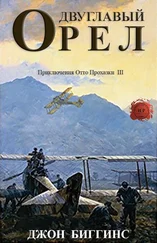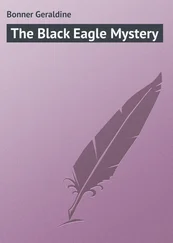“Do you think that they’d take kindly to that? You make it sound like running a colony in Africa.”
“Perhaps it is rather like that. If they are eventually absorbed into Germany, then frankly we would be doing them a kindness. Honestly, Prohaska, there’s no future in these little peoples now: the Slovenes and Czechs and the rest. They only survived this long because the Habsburg state has somehow managed to stagger a century too far. From now on it’ll be the big nations who count; this war demostrates that if nothing else. Cruel to absorb them into Greater Germany? We’d be far crueller to them in the long run if we didn’t, with the Italians waiting out there to swallow them up. We’re bringing them into the modern world, making them catch up with the rest of Europe after a thousand years of slumber. That’s our Germanic mission: to force these fossil peoples into the twentieth century. ‘Deutsche Wesen soll die Welt genesen.’ ”
The next morning the telephone rang at last in the Kanzlei at Caprovizza airfield. We were to make ready for a fresh experiment in wireless artillery direction from the air. The news of our success at Monte Nero at the beginning of August had spread as far as the High Command, and a new operation was being planned to try and take some of the pressure off our troops on the Carso. The elderly coast-defence battleship S.M.S. Prag was lying at Pola and would steam up to the Gulf of Trieste on 14 August to shell a large group of ammunition dumps which had just been revealed by aerial photography in a wood near the railway line between Sagrado and Ronchi. The ship would anchor off Sistiana and her battery of four 24cm guns would fire at maximum elevation to try and hit the dumps, hoping to set off a general and demoralising explosion since (our artillery experts said) the Italians had stacked the shells far too close together for safety. It would need wireless spotting to do the job—the target was twelve kilometres inland and hidden from our spotters by the edge of the Carso escarpment—and it would also require an officer-observer used to naval signalling and gunnery practice. The choice was obvious, so Toth and I were ordered to get ready to fly the next morning.
We would be flying a Lloyd once again, since the fuselage of the Brandenburger was still not quite roomy enough for all the paraphernalia of a wireless station. Likewise we would once again be flying unarmed, for reasons of weight-saving. I was none too happy about this after our encounter with the Nieuport over Monte Nero, so I was determined this time to take along something more powerful than a Steyr pistol by way of protection. A Mannlicher cavalry carbine was not a great improvement, it is true, but it might give us some chance if we could let the enemy get close enough.
As to the wireless station, we learnt that we would not be carrying the clumsy spark transmitter which we had used at Monte Nero. Instead we would be provided with the very latest in German wireless technology: a Siemens-Halske valve set. This apparatus was (we were told) more fragile than the spark set, and almost as heavy, but it could be tuned more precisely and, above all, would allow us not only to transmit but also to receive signals, thus doing away with the previous rigmarole of white and red and green rockets.
That part at least was reasonably simple, installing the wireless set that afternoon and going up to run a few test-exchanges of signals with a ground station at Haidenschaft airfield. The fun started when we landed and found a naval liaison officer waiting for us so that we could coordinate our plans for tomorrow. The first thing we discovered was that the naval charts did not extend as far inland as our target, and that the k.u.k. Armee’s maps of the area were not only on a different scale but used an entirely different grid system. In the end I had to make up an “oleat”: a sheet of transparent paper with a naval grid marked on it so that we could superimpose it on the army map.
That problem was simple enough to solve; far trickier was the difference in gunnery signalling practice between the Army and the k.u.k. Kriegsmarine. This would make it necessary for the Prag to carry a major of artillery as a liaison officer. However, the officer in question did not know Morse code, so it would be necessary to assign him a naval telegraphist. But at this point questions of inter-service etiquette began to arise. The Navy’s self-esteem would not permit an army officer to give direct orders to the crew of a battleship while at sea, so a naval Korvettenkapitan would have to be detailed to transmit instructions from the Major to the ship’s Wireless Operator. Likewise the army officer would not be permitted to give orders direct to the Prag’s turret captains. Instead (it was eventually decided) he would give the necessary bearing and elevations to the ship’s Gunnery Officer as “recommendations,” and the latter would then transmit them to the turrets as orders. Likewise the order “Fire!” would be respectfully suggested to the naval Liaison Officer, who would give it to the Gunnery Officer, who would then convey it to the turret-commanders. Furthermore, it was decided that in case things went wrong and the two services started blaming one another, all orders were to be duplicated in writing. In fact I suspect that it was only because I was a naval officer myself that I escaped having a petty officer telegraphist squeezed into the aeroplane cockpit with me to relay my signals to the ship. As it was it involved a chain of no less than seven persons in converting my aerial observations into a shell issuing from the muzzle of a gun. It was a fire- control system such as only Habsburg Austria could have devised.
Another drawback to this operation, from our point of view at least, was that our Siemens-Halske wireless set was ultra-top-secret. In fact at first Kraliczek was going to forbid it to be carried across the lines for fear of its being captured. It was only after we had spent a hour or so explaining, with the aid of diagrams, that there is not a great deal of sense in artillery-spotting on one’s own side of the lines that he had relented on this—but only on condition that we flew with a large demolition charge attached to the set so that it would blow up the apparatus, and us, if we crashed. Thus it was that, a generation before the Japanese kamikazes, Toth and I found ourselves flying in an aeroplane containing a two- kilogram slab of Ekrasit, the Austrian brand of TNT, attached to the wireless with surgical tape and wired up to explode if we hit the ground. It was all most reassuring.
In the event, though, our fine new wireless set was barely used that day. Our take-off from Caprovizza was delayed until mid-morning by fog over the target (the lower end of the Isonzo is notoriously foggy, even in summer). So it was not until nearly 1100 hours that we crossed the lines near Gorz and made our way southwards in a half-circle over Gradisca and Sagrado to approach our target from the landward side. It was evidently going to be a rough ride: flak shells banged around us at intervals from Gorz onwards, and once the mist cleared from their airfields there would be Italian single-seaters coming up to chase us. Better get the job done as quickly as possible and make for home, I thought: flying unarmed over enemy territory in broad daylight with a slab of explosive next to me did not appeal to me in the least.
We arrived over the target at two thousand metres amid a desultory peppering of flak bursts—only to find that the target was no more. There could be no doubt about it as we circled overhead and I scanned the forest clearing with my binoculars: the shell-dump had almost gone. When I compared the scene with an aerial photograph from two days before I could see where the tarpaulin-covered stacks had been—pale oblong patches on the grass of the clearing—but nearly all of them had gone now. As I watched, a beetle-like chain of motor lorries bumped along the forest trackway, carrying the shells forward to the hungry battery positions. I flicked the wireless set switch to “Transmit” and put on the headphones, then tapped out the message “Shells gone—query what now?” There was an acknowledge signal from the Prag, a distant grey shape out on the blue shining expanse of the Adriatic, but nothing more. Meanwhile we circled fretfully, dodging the flak shells. I could imagine the scratching of heads and confusion that reigned inside the conning tower of the old battleship. But that was scarcely any consolation to us now, flying around in slow circles to provide target practice for the Italian flak battery crews. I was just wondering whether to take matters into my own hands and head us for home when Toth turned and tugged at my sleeve excitedly. He pointed away to southward.
Читать дальше












